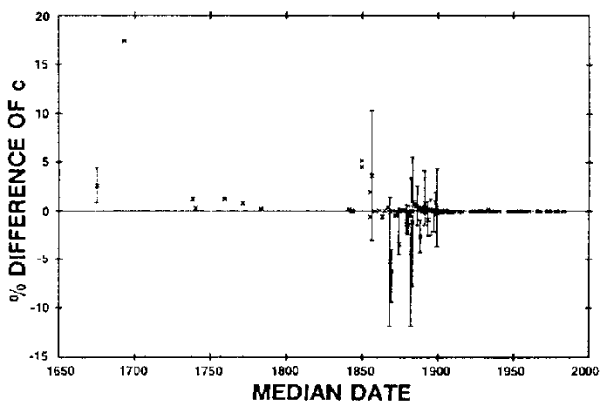 |
Science Frontiers ONLINE No. 58: Jul-Aug 1988 |
|
|
Has the speed of light decayed?
In a recent technical report, The Atomic Constants, Light, and Time, T. Norman and B. Setterfield answer this question affirmatively. Scientific creationists have in the main welcomed this report, because its findings are consistent with their desire to prove the earth very young. However, G.E. Aardsma, at the Institute for Creation Research, in California, urges caution:
"Measurements of the speed of light have been made for the past three hundred years which could potentially provide the required empirical basis. Norman and Setterfield tabulate the results of 163 speed of light determinations in The Atomic Constants, Light, and Time, and claim clear support for the decay-of-c hypothesis from this data set. [c= velocity of light] My inability to verify this claim when this data set was subjected to appropriate, objective analyses is the motivation for this article which is intended to caution creationists against a wholesale, uncritical acceptance of the Norman and Setterfield hypothesis. At the present time, it appears that general decay of the speed of light hypothesis is not warranted by the data upon which the hypothesis rests."
(Aardsma, Gerald E.; "Has the Speed of Light Decayed?" ICR Impact Series no. 179, May 1988.
Comment. Thus, American creationists concur with what Australian scientists have already concluded. (Bridgstock, Martin; "Creation Physics," Search, 17:141, 1986. Cr. R. Molnar.)
Reference. Historical measurements of the speed of light are recorded in our handbook: Mysterious Universe. To order, visit: here.
 | Measurements of the velocity of light (c) versus year, as plotted by Aardsma. VErtical lines are error bars. |